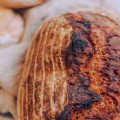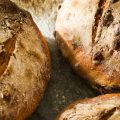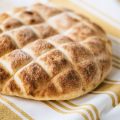Bread is so versatile, you’ll find yourself having just about anything with it. Whether it’s used as a dipping tool for your delicious soup, or paired with a pretty bowl of salad, what’s not to like? But some ingredients used to make bread aren’t considered suitable for vegans, or those who suffer from lactose intolerance, for instance. Sourdough bread is a common favorite amongst vegans, because of its safe and simple ingredients. But does sourdough bread have dairy? Let’s find out!
Table of Contents
- Is Sourdough Bread Vegan?
- What Makes Sourdough Bread Sour?
- Is there Dairy in Sourdough Bread?
- Vegan Ingredients in Sourdough Bread
- Non Vegan Ingredients in Sourdough Bread
- Types of Sourdough Bread that are Dairy Free
- So Does Sourdough Bread Have Dairy?
- FAQs
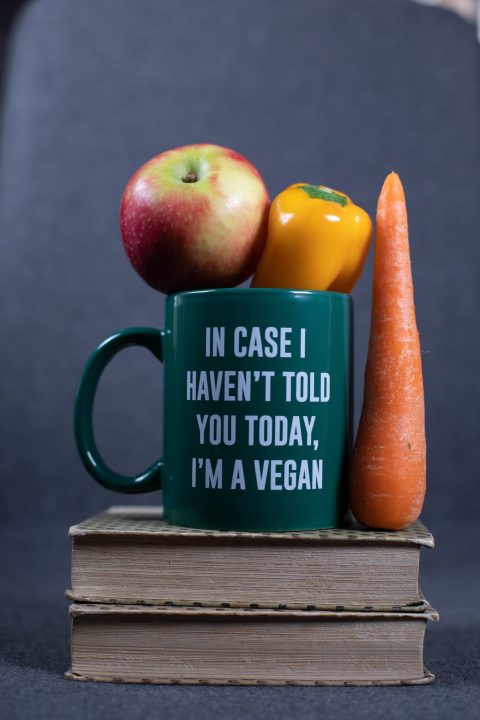
Is Sourdough Bread Vegan?
Although most vegans gravitate towards sourdough bread, it isn’t always considered a vegan-friendly bread. With the traditional method of making sourdough bread, we use wheat flour, and water, as well as other ingredients, such as yeast, salt and sugar.
However, some bakers prefer to use lard or butter in the recipe. These two animal products make it non-vegan.
While there may be people who avoid some animal products due to medical reasons, most vegans avoid all animal products such as milk, butter, honey and more.
What Makes Sourdough Bread Sour?
Sourdough bread is made using a starter, which is a mixture of water and flour. The starter is allowed to ferment before the baker uses it as an ingredient in their bread recipe. The fermentation process makes sourdough bread more nutritious, and also gives it that distinctive taste we all know and love.
The longer you allow your starter to ferment before using it, the higher its concentration of acids will be.
If you’re wondering if dairy makes sourdough sour, it doesn’t! Sourdough doesn’t need dairy in its fermentation.
Is there Dairy in Sourdough Bread?
Primarily, the ingredients used to make sourdough bread are wheat flour and water, sometimes salt for added flavor. Anything else added would rely on the overall texture, and distinct flavorings of the sourdough loaf.
Normally, bakers don’t add dairy ingredients to the sourdough. If they alter the traditional recipe, they may add sugar, honey, milk or butter, therefore creating a loaf that isn’t dairy-free or suitable for vegans.
For more on the status of your sourdough bread, and to distinguish between vegan and non-vegan sourdough, check out my blog Is Sourdough Vegan?
Vegan Ingredients in Sourdough Bread
Generally the ingredients used in sourdough bread are considered suitable for vegans, and they include:
- Flour
- Baking Powder
- Baking Soda
- Salt
Flour
Majority of bakers when making sourdough bread use all-purpose flour, which is a staple ingredient in all types of bread, so it’s important to use the right kind. Bread flour has a higher protein content, resulting in a chewier loaf.
Baking Powder
Baking powder is literally baking soda with an acid added to it. This helps give your dough a lift and structure, as well as adding that slight tangy flavor to your bread.
Baking Soda
Baking soda is used as a leavening agent that reacts with acids in the mixture to produce carbon dioxide bubbles, causing the dough to rise beautifully when baking.
Salt
The ingredient salt brings out flavors from other ingredients, enhancing their taste without overpowering its overall taste. Salt also acts as a preservative by inhibiting bacteria growth within food products containing salt or ionized water molecules, much like those present in salt crystals.
But it’s best not to add too much salt, otherwise the typical sourdough flavors will alter to a more salty taste.
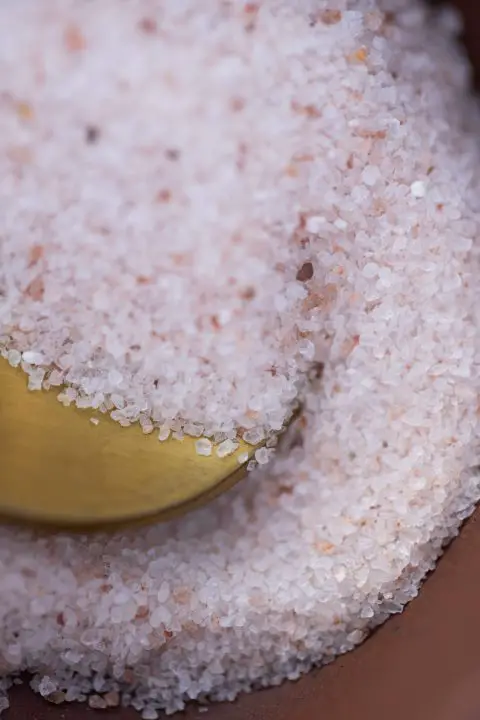
Non Vegan Ingredients in Sourdough Bread
Additionally, it’s not completely impossible to learn that there are non-vegan ingredients found in some sourdough bread. These can include:
- Milk
- Casein
- Milk Fat
- Butter
- Whey
Milk
Milk is a nutrient-dense food that can be used in a variety of dishes. Dairy products are produced by mammals and contain high levels of protein, vitamins A and D, riboflavin, niacin and vitamin B12. Milk contains calcium but it’s not as concentrated as other dairy products like cheese or yogurt.
Because dairy cows are constantly pregnant or producing milk for their young calves, they’re often treated with hormones to increase production (this is not required if you buy organic).
In addition to increased hormone production in the cows themselves, many vegans choose not to consume dairy because they believe it’s unethical to use animals for human purposes.
Casein
Casein is the protein that makes up the majority of milk, and it’s also the major component in cheese. It’s what gives dairy products their smooth texture and elasticity, which is why casein is used to make everything from butter to ice cream.
Casein can be found in many sourdough recipes. I’s always better to check with the baker before purchasing, especially if you’re trying to avoid ingredients like these in your sourdough bread.
Milk Fat
Milk fat is a common ingredient in many non-vegan sourdough breads. It’s used to add flavor and moisture to the bread, but it can also make the bread taste a little too milky or greasy for some tastes.
There are a few different ways that milk fat gets into your food, and some of them are quite sneaky.
Some examples of milk fat include:
- Ghee can be added to bread, or used to make cookies
- Sour cream is a dairy product which makes it not suitable for vegans
- Cream cheese is made with cream, or whey protein so strictly non-vegan
- Yoghurt can be non vegan too because it can sometimes contain gelatine
Butter
Butter is a dairy product. It’s made from milk and is a by-product of the dairy industry, so normally strict vegans tend to steer clear of this it.
Whey
Whey is a by-product of cheese making. It’s used as a thickener and has a high amount of protein. Whey can be found in bread, breadsticks, crackers, cakes and cookies. Whey is also added to ice cream, yogurt and other foods to thicken them up.
Types of Sourdough Bread that are Dairy Free
Looking for sourdough bread that doesn’t have you second guessing the ingredients? Fear not, there are a few delicious alternatives that are absolutely suitable for vegans, and dairy free, so you can comfortably enjoy the soft, plush texture of your bread, just like you deserve!
Here are some delicious options for you to choose from:
- Baguette Bread
- Pumpernickel Bread or Other Rye Bread
- German Sourdough Bread
- Viennese Sourdough
- San Francisco-Style Sourdough
Baguette Bread
A baguette is a type of bread that is made from wheat flour, water, and salt. It takes several hours to make the dough rise and then bake it in a wood-fired oven.
Baguettes are not sourdough breads, but they are similar to French breads including focaccia, as they use yeast and have a crusty exterior. The difference is that baguettes don’t contain any dairy products or other additives, while focaccia usually does.
Pumpernickel Bread or Other Rye Bread
Pumpernickel bread is a type of dark rye bread that’s made with a lot of whole grain and has a very sour taste. It’s also often used in German cuisine, especially on Christmas tables.
Rye bread is a type of sourdough bread made using rye flour instead of wheat flour. The difference between pumpernickel and rye is that pumpernickel contains molasses and caramelized sugar, which gives it its dark colour, while plain rye contains no sweeteners or spices.
German Sourdough Bread
German sourdough bread is made with a mixture of wheat flour, rye flour, and water. It’s baked in a wood-fired oven, and is a mixture of wild yeast and bacteria. The sourdough is left to ferment for several days before being used to make the bread.
Viennese Sourdough
Viennese Sourdough is a type of bread that has a sour taste. It is made with a starter culture, which is kept alive by the addition of flour and water.
This bread can be made dairy free by substituting butter with margarine, or by using an oil-based spread instead.
San Francisco-Style Sourdough
San Francisco-style sourdough is a light and airy bread. It gets its name from the San Francisco Bay Area in California, where it was first created.
This type of sourdough is made with a starter, which is a mixture of flour and water containing yeast and bacteria.
The starter will ferment over time, producing carbon dioxide gas bubbles that cause the dough to rise. San Francisco-style sourdough is also known for its deep brown crust colour and moist interior texture.
So Does Sourdough Bread Have Dairy?
Ingredients like milk, or butter aren’t actively used in sourdough bread, unless the baker wishes to soften the texture and enhance the flavor of the sourdough bread.
Normally the only ingredients used in sourdough bread are whole wheat flour, water and salt.
Therefore vegans, and those who suffer from a medical intolerance to dairy, can comfortably enjoy sourdough bread without fear of extra ingredients.
Be sure to check with your baker, in case!
FAQs
Can You Eat Sourdough Bread if You’re Lactose Intolerant?
Yes, you can eat sourdough bread if you’re lactose intolerant. Sourdough bread is made with a starter that contains lactobacillus bacteria and is fermented for a longer period of time than other breads.
What Breads are Dairy Free?
There are many dairy-free options for you to choose from: Whole-wheat bread, banana bread, carrot bread, oat bread and lot more.
Can Vegans Eat Sourdough?
Vegans can eat sourdough bread as long as there is no milk, butter or cream used in the dough.

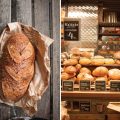
![[Video] From The Seed To The Peasant Bakery With Nicolas Supiot 4 [video] from the seed to the peasant bakery with nicolas supiot](https://www.mydailysourdoughbread.com/wp-content/uploads/2022/11/image-18-120x120.jpeg)
